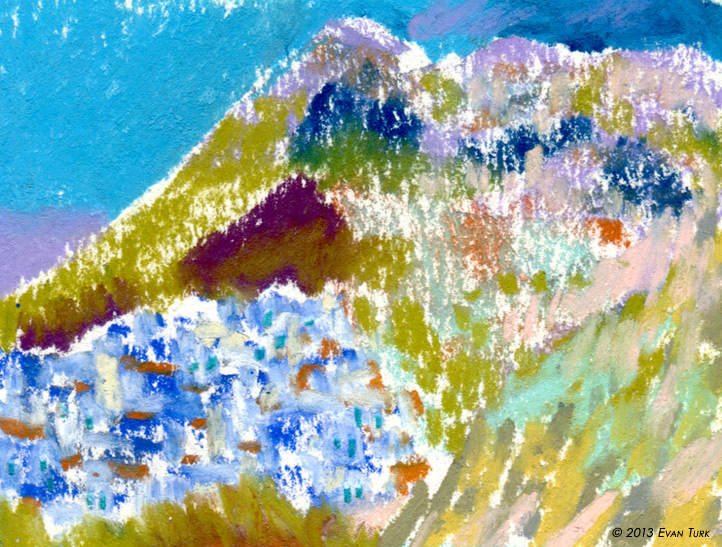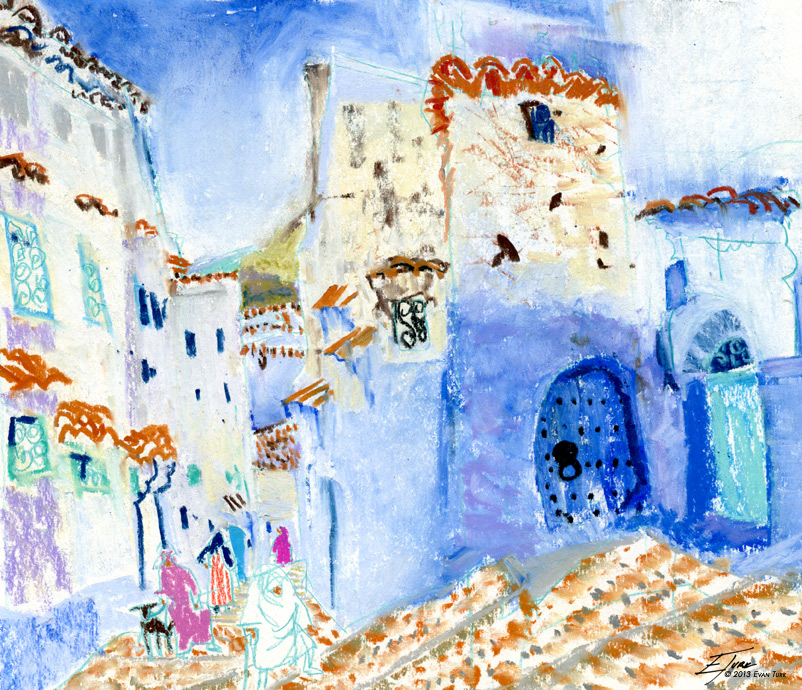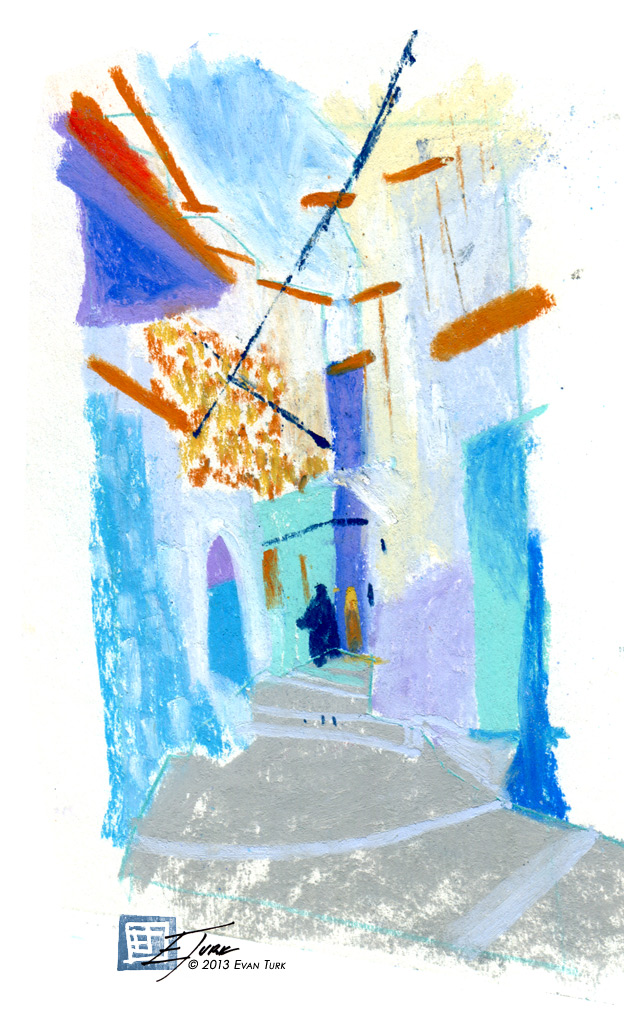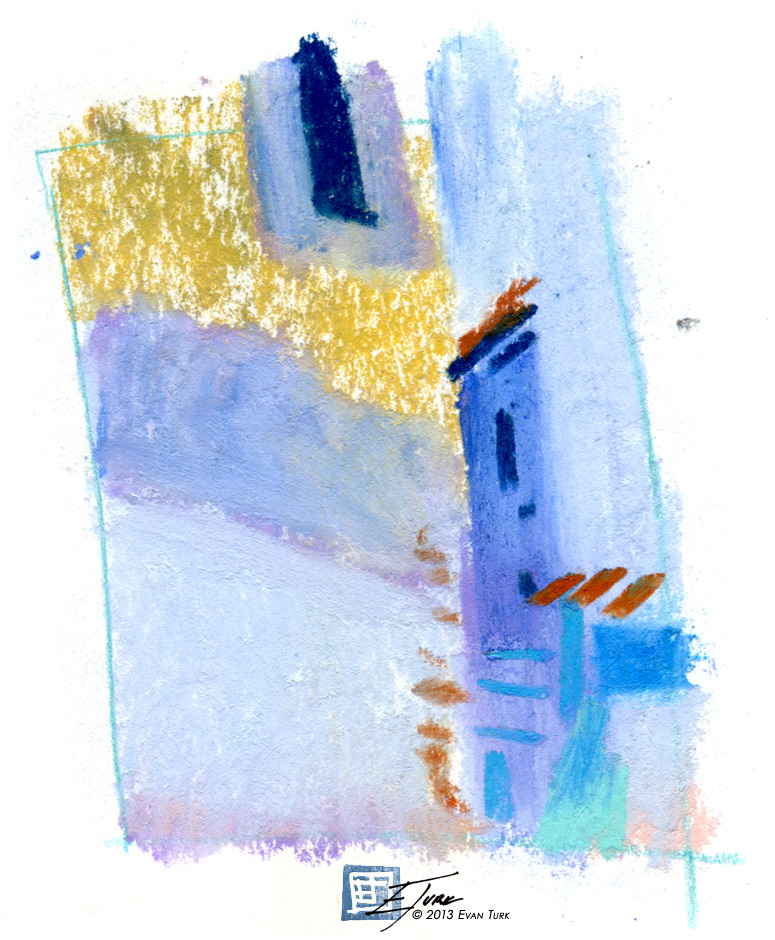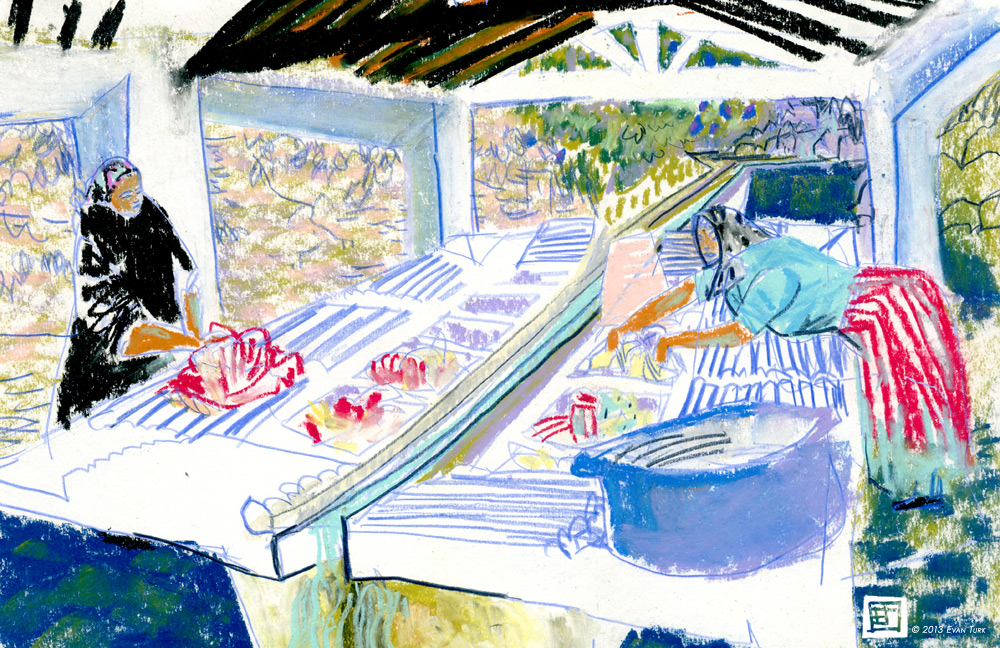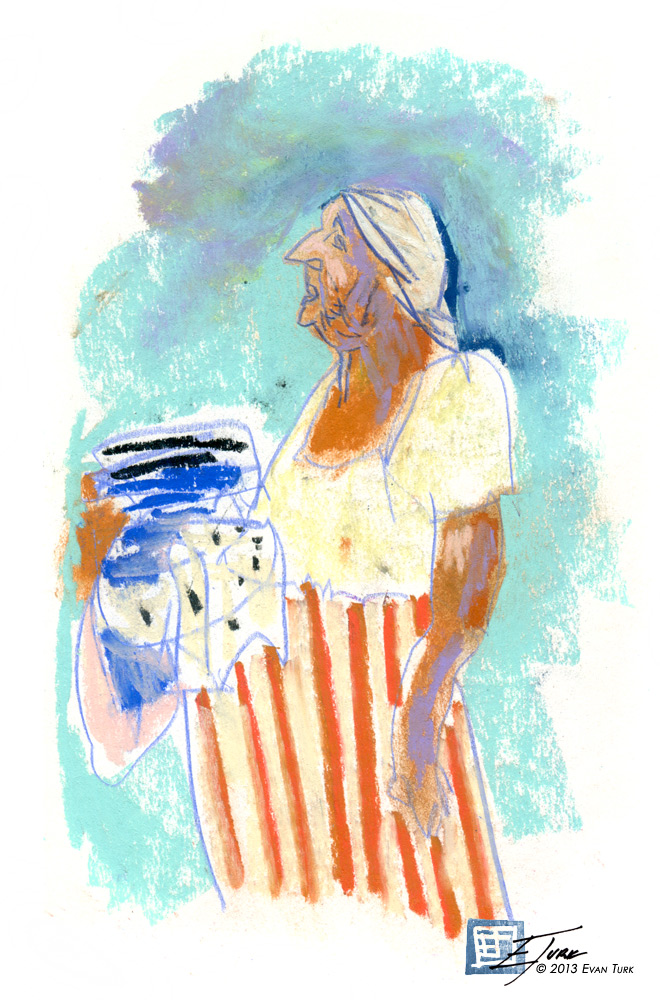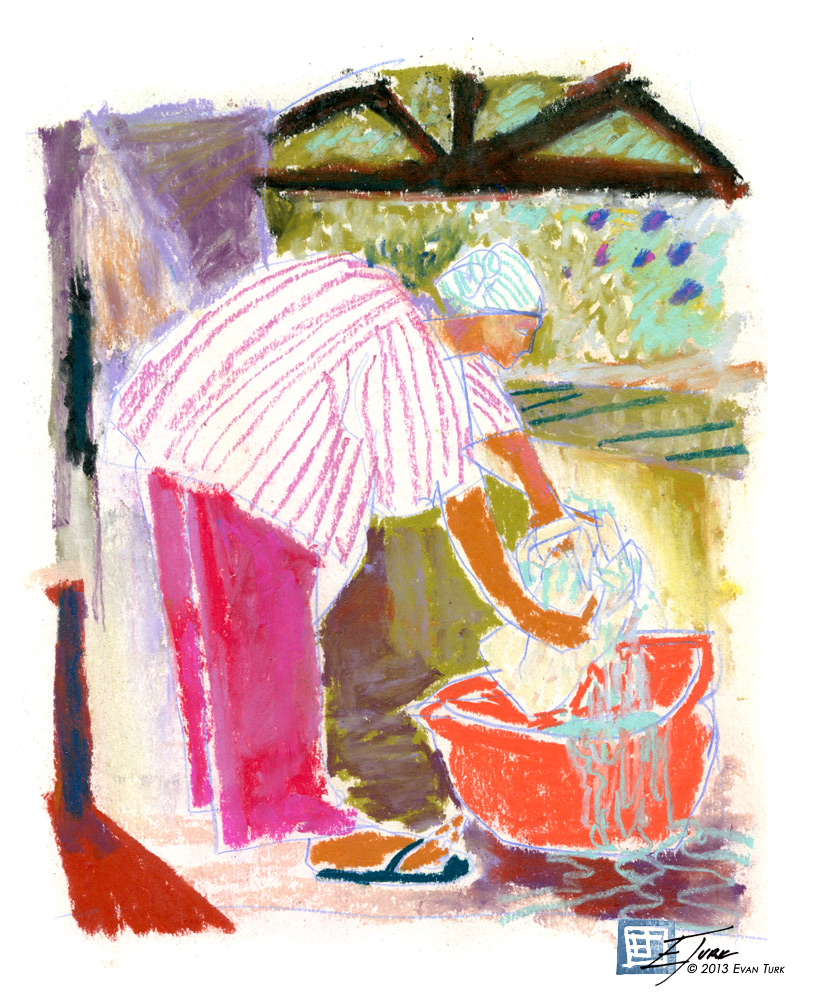When we returned to Fes, Chris and I went out into the souks and happened upon a tiny, unusual shop on one of the many alleys of craftsmen. The man, dressed in black and grey with salt & pepper hair, was making black iron work with silver wire hammered into intricate designs. The iron-worker was such a sweet man, and a real artist. We found out later that the technique is one called Damasquine, and is a Moroccan version of a Syrian craft that originally used gold wire in much more formal Islamic designs. This man, while he created the more formal Moroccan style work as well, had walls of beautiful and whimsical animals that he had drawn himself. They felt like little Picasso drawings made out of iron and silver.
After picking out all of our Christmas gifts for the year, we asked if we could stay and draw him while he worked. We were able to see him create one animal from, from start to finish, in his tiny 5x5 shop.
He began by sawing the iron into the shape of a fish.
He then scored the iron and polished it with a jade-tipped utensil.
Then he heated the iron in a burner and it came out hot and jet black.
Then, using a tiny hammer, he hammered the silver wire into a design, like drawing.
Once he finished, he polished it again with the jade, and gave it to us as a gift. It was
so wonderful to see someone so passionate about what he was doing. His father
had done Damasquine in gold, and he was the 5th generation of
Damasquine workers in his family. He is the only one to practice the
craft in Fes (although a dozen or so others do in the nearby city of Meknes), and he said that while his children enjoy drawing,
they didn't like the hard manual labor that goes with creating the iron
work, so he may be the last.





